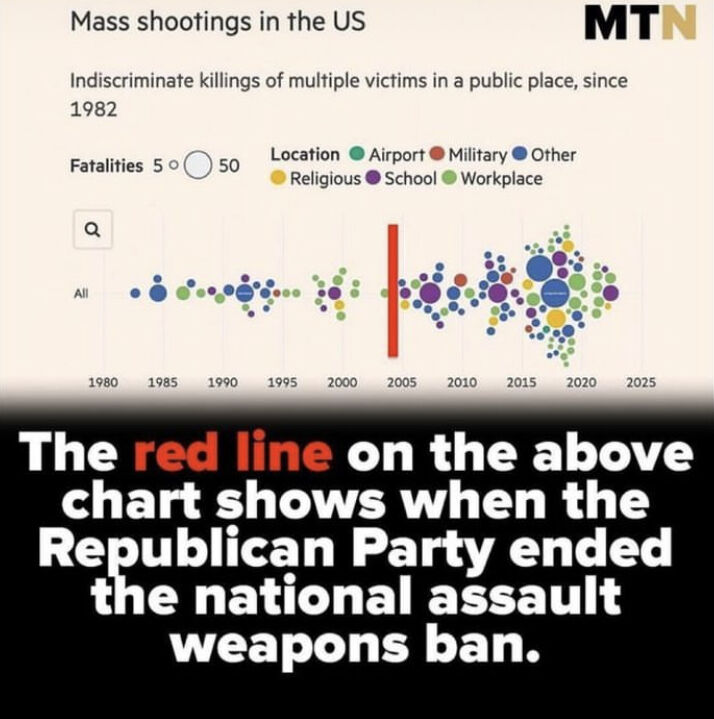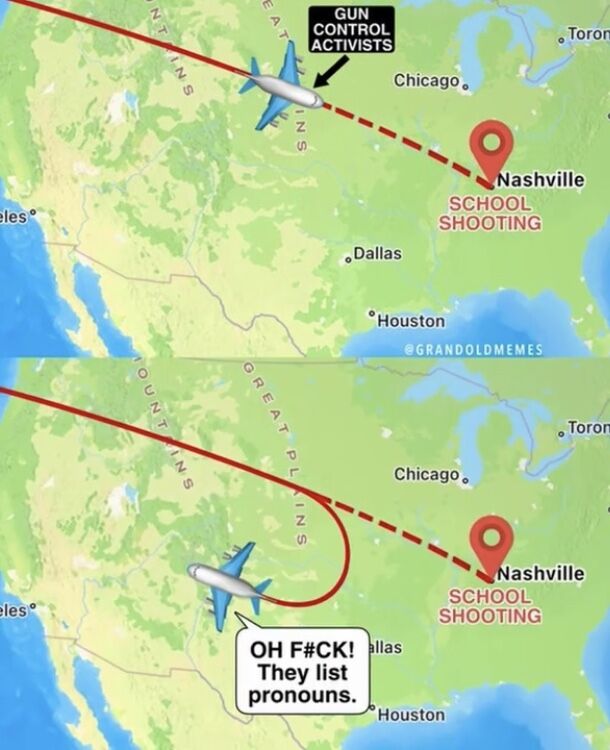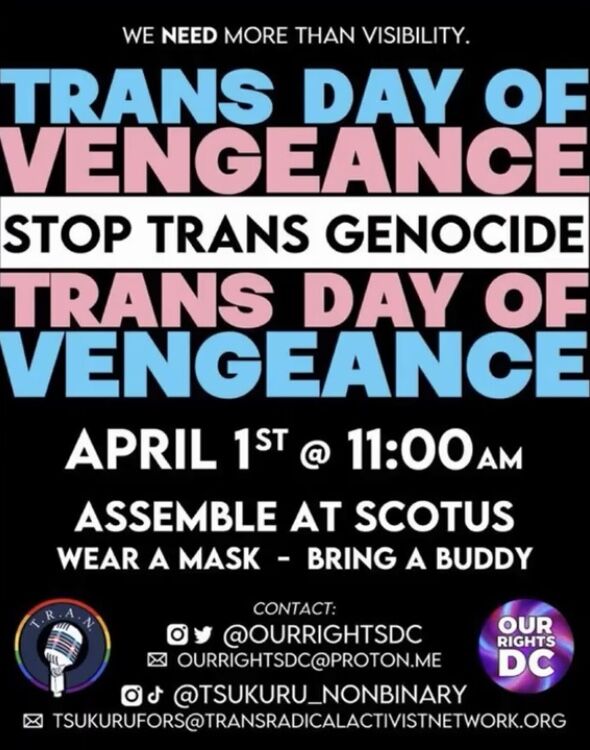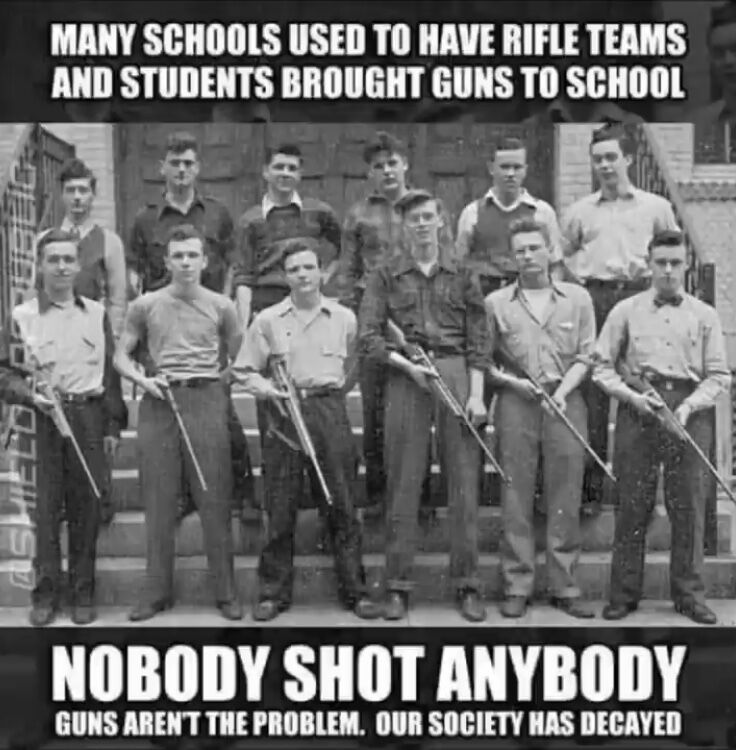The assault weapons ban worked
Mar 28, 2023 10:33:09 #
Mar 28, 2023 10:47:30 #
Mar 28, 2023 11:26:53 #
Kevyn wrote:
It is past time to bring it back
The ban didn't work, and it was sunsets not v**ed out by Republicans. A little honesty might help your cause/beliefs, when you have to lie to get your way...there is something wrong with your way
Mar 28, 2023 11:28:42 #
So true, when I was in high-school there were at least 30 guns on campus everyday, and no one got shot
Mar 28, 2023 11:38:10 #
Kevyn wrote:
It is past time to bring it back
How many time has an actual assault weapon been used in a shooting?
Mar 28, 2023 11:46:32 #
Kevyn wrote:
It is past time to bring it back
The only assault weapon that should be banned is your malfunctioning "brain".
Mar 28, 2023 11:56:12 #
Mar 28, 2023 13:22:55 #
Kevyn wrote:
It is past time to bring it back
If you bring it back my AR-15s and AR-10s will go up in value 10x as they did before. With inflation the way its been, out of control, for the last 2 years I can sell one and make all of my money back👍
Mar 28, 2023 20:34:00 #
Liberty Tree wrote:
How many time has an actual assault weapon been used in a shooting?
Let me guess you are one of the people so ignorant about firearms you don’t understand the only actual legal definition of assault weapons insists they are capable of fully automatic fire. Do a bit of research, you are wrong.
Mar 28, 2023 20:50:59 #
Kevyn wrote:
Let me guess you are one of the people so ignorant about firearms you don’t understand the only actual legal definition of assault weapons insists they are capable of fully automatic fire. Do a bit of research, you are wrong.
No dumbass YOU are wrong and ignorant (as usual).
They are defined as SEMI automatic NOT automatic.
Do you know how to read or just know how to whine like the little girl you are??
You are an embarrassment to people with brains.
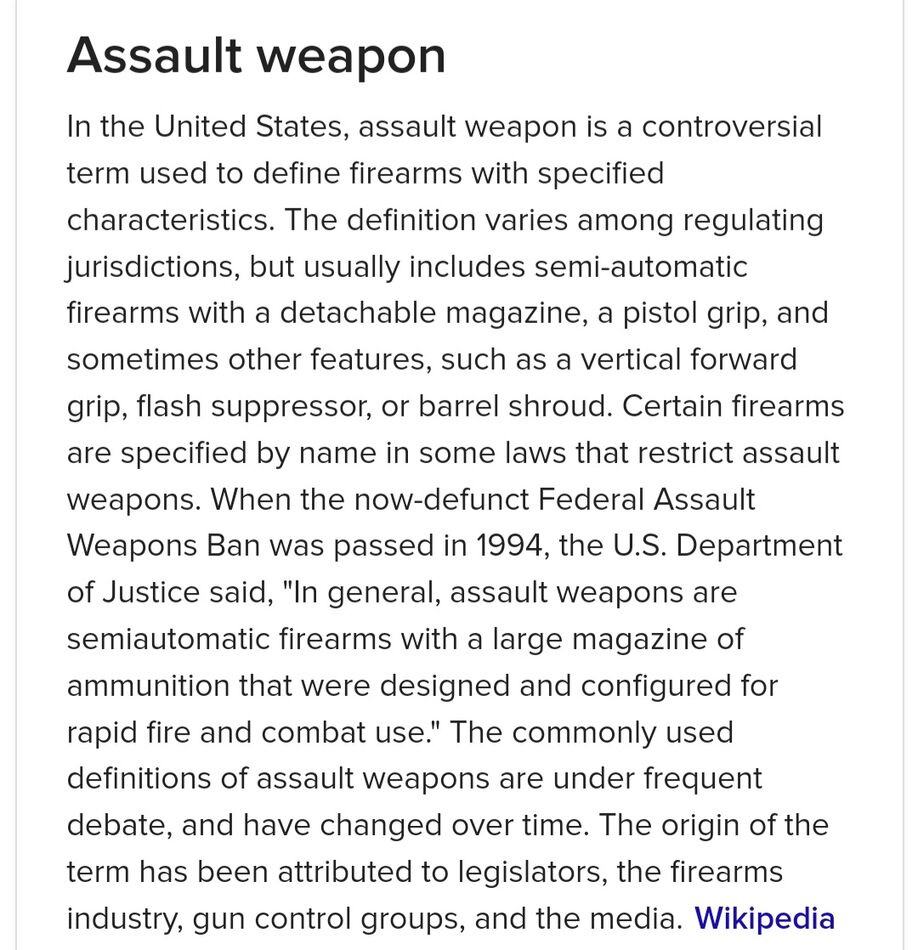
Mar 28, 2023 20:55:12 #
ForThePeople wrote:
No dumbass YOU are wrong and ignorant (as usual).
They are defined as SEMI automatic NOT automatic.
Do you know how to read or just know how to whine like the little girl you are??
You are an embarrassment to people with brains.
They are defined as SEMI automatic NOT automatic.
Do you know how to read or just know how to whine like the little girl you are??
You are an embarrassment to people with brains.
I doubt anyone can educate little kevy more than likely he'd be afraid of a BB gun .
Mar 28, 2023 21:20:13 #
4430 wrote:
I doubt anyone can educate little kevy more than likely he'd be afraid of a BB gun .
Like they say, you can’t fix stupid.
Stupid is as stupid does (and says).
Mar 28, 2023 21:37:52 #
Kevyn wrote:
Let me guess you are one of the people so ignorant about firearms you don’t understand the only actual legal definition of assault weapons insists they are capable of fully automatic fire. Do a bit of research, you are wrong.
It’s not the guns. It’s people that are mentally r****ded.
Mar 28, 2023 21:42:31 #
Kevyn wrote:
It is past time to bring it back
Studies Find No Evidence That Assault Weapon Bans Reduce Homicide Rates
The studies, data, and examination of the available evidence by scholars suggest that assault weapon bans or buybacks will have little if any effect on rates of violent crime and gun violence.
Mass shootings are unconscionable acts of violence and are the most acutely disturbing form of gun violence. In the wake of such tragedies, many gun control advocates lambast gun rights supporters for allowing “weapons of war” onto the streets of America and not supporting “responsible gun reform.”
The measures put forth are usually either a ban and/or mandatory buyback of "assault weapons," most of which are more accurately known as semi-automatic rifles. ("Assault weapon" is a vague term that varies state to state and can include common pistols and shotguns depending out other attachable accessories.)
While these initiatives are “common sense” to advocates, if one takes the time to examine the data and evidence, it becomes abundantly clear that gun control in this form will do little to reduce gun violence.
1. Mass shootings with assault weapons constitute a fraction of a percent of gun violence
2007 - 2017
Total homicides = 150,352
Gun homicides = 103,901
Mass shooting homicides = 495
Mass shootings involving "assault weapons" = 253
Mother Jones’s database of mass shootings, defined as shootings involving three or more fatalities, shows that between 2007 and 2017, there were 495 people murdered in such events. When breaking down those shootings by the weapons involved, it is revealed that around half of those victims (253) were murdered by a perpetrator with an assault weapon (AW), such as an AR-15.
Over the same timeframe, FBI annual crime reports show that there were 150,352 homicides in total, of which 103,901 involved firearms. This means that mass shootings involving AWs constitute 0.17 percent and 0.24 percent of all homicides and firearm homicides, respectively.
To further illuminate the relative infrequency of mass shootings with “assault weapons,” consider the fact that in 2017, some 1,590 people were murdered using knives or sharp instruments.
Over the last five years, 261 people were murdered with AWs in mass shootings (an average rate of 52 murders annually.) At such a rate, it would take over 30 years of mass shootings with AWs to produce the same number of deaths as one year’s worth of knife murders. (It would take 135 years’ worth of mass shootings with AWs to produce the 7,032 deaths that handgun homicides did in 2017.)
Consequently, even a completely effective ban/buyback of AWs would have an incredibly small impact on rates of homicide and gun violence, and then there is always the probability that people intent on committing mass violence will substitute AWs with other available firearms or methods of destruction (such as homemade explosives.)
2. Studies find no evidence assault weapon bans reduce homicide rates
There are theoretical reasons to doubt the effectiveness of a ban or buyback of assault weapons, but it also doesn’t help that real-world evidence suggests these measures fail to produce reductions in gun violence.
Between 1994 and 2004, the federal government banned the manufacture, sale, or t***sfer of assault weapons and large-capacity magazines. A subsequent Department of Justice study found no evidence that the ban had had any effect on gun violence and stated that “should it be renewed, the ban’s effects on gun violence are likely to be small at best and perhaps too small for reliable measurement.”
A recent study published this year in the Journal of General Internal Medicine examined state gun control policies and found no statistically significant relationship between assault weapon or large-capacity magazine bans and homicide rates. A Journal of the American Medical Association (JAMA) study came to the same conclusion.
3. Australia doesn’t prove gun control works
In 1996, Australia experienced a horrific mass shooting. In response, the government implemented a mandatory buyback scheme that banned and confiscated certain types of firearms, including assault weapons.
A 2016 JAMA study on the matter found no statistically significant change in the trend of the country’s firearm homicide rate following the law’s passage. The authors also noted that the decline in firearm suicides post-ban could not clearly be attributed to gun control since non-firearm suicides fell by an even greater magnitude.
4. There is inconclusive evidence that assault weapons bans reduce mass shootings
See Graph below
Last year, the RAND Corporation released an extensive scientific analysis of available evidence on gun control measures and how they relate to various crime outcomes. Regarding the effect of assault weapons bans on mass shootings, they determined the evidence was “inconclusive.”
When former President Bill Clinton claimed the 1994-2004 federal assault weapons ban was associated with reduced mass shootings, Politifact rated that claim as “half-true,” noting that “the ban’s impact remains unclear.”
Using Mother Jones’s data on mass shootings, I constructed the graph you see above. Prior to the ban, on average five people were k**led with assault weapons in mass shootings per year. During the ban, that number went slightly down to four. Post-ban, it rose to 22.
But mass shootings with assault weapons didn’t rise until 2012—eight years after the ban ended. In the seven years after the ban, there was only an average of four people k**led in mass shootings with assault weapons per year.
Given the fact that the pre-ban period and the seven years after the ban had essentially the same rate of mass shooting deaths with assault weapons, it is hard to prove that the ban had any effect on mass shootings.
In Conclusion
The studies, data, and examination of the available evidence by scholars suggest that assault weapons bans or buybacks will have little if any effect on rates of violent crime and gun violence. There seems to be no relationship between these gun control measures and reductions in firearm homicide or suicide, and there doesn’t appear to be any clear evidence they reduce mass shootings.
Source: Foundation for Economic Education
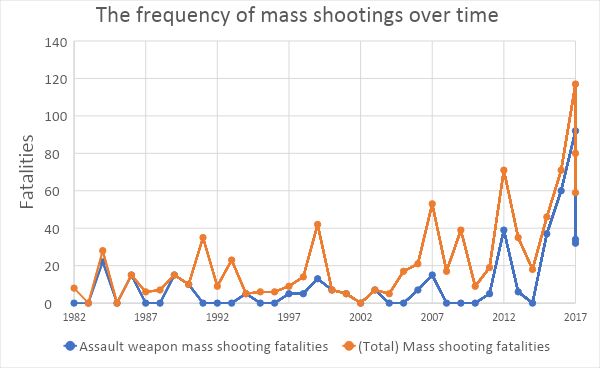
Mar 28, 2023 22:09:46 #
If you want to reply, then register here. Registration is free and your account is created instantly, so you can post right away.

